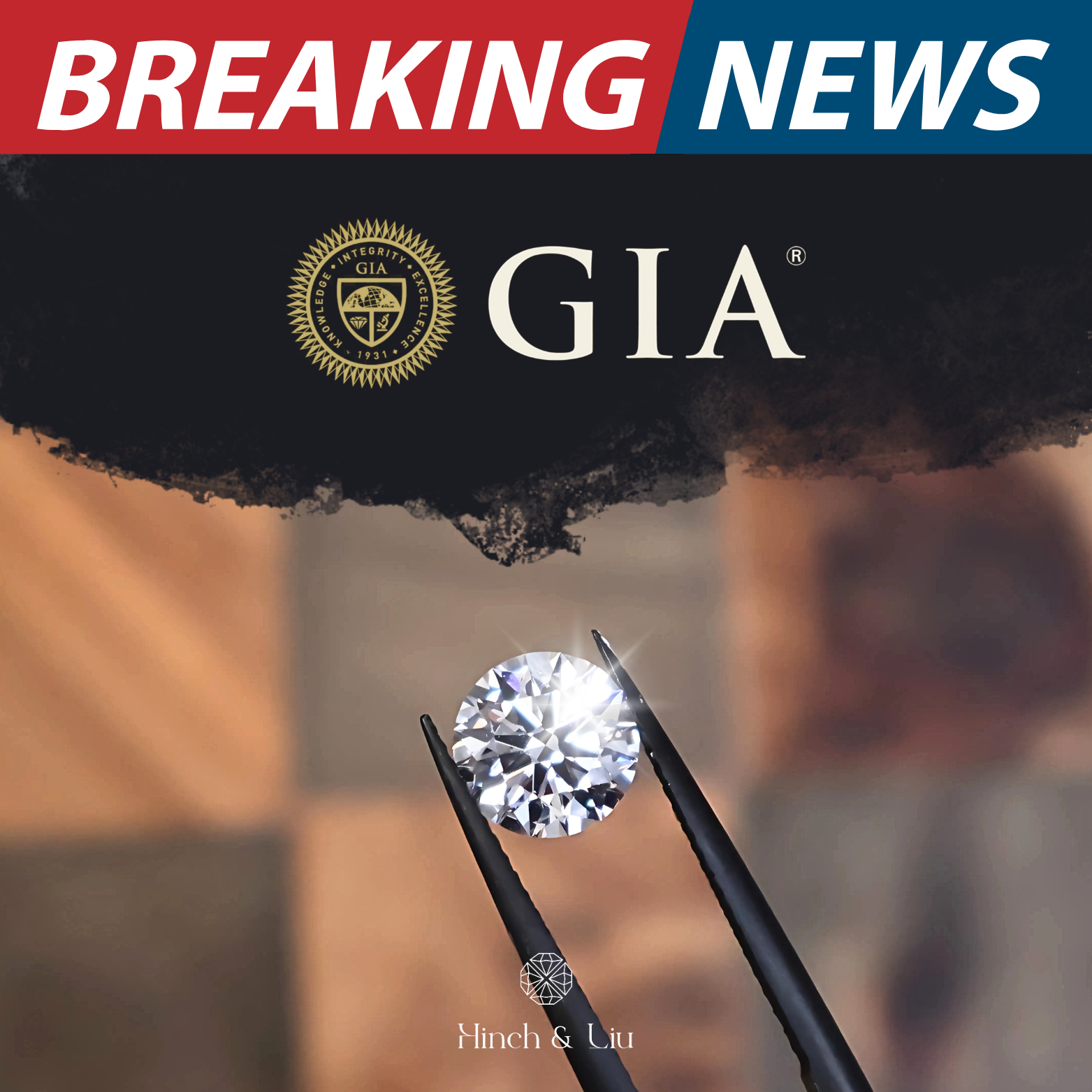Article: Are Lab Grown Diamonds Real? Unveiling the Truth Behind Lab-Created Gems.

Are Lab Grown Diamonds Real? Unveiling the Truth Behind Lab-Created Gems.
Lab-grown diamonds have become a hot topic in the world of fine jewellery, often accompanied by questions, doubts, and debates. Are they real? Do they sparkle the same? Are they worth the investment? In this guide, we’ll uncover the full picture — what lab-grown diamonds really are, how they compare to natural diamonds, and why more consumers than ever are embracing them.
The Definitive Answer: Yes, Lab Grown Diamonds Are Real Diamonds
What Exactly Are Lab Grown Diamonds?
Consider the ice cubes in your freezer. You put water in, the freezer cools everything down below 0 degrees, and the water freezes into ice. The ice you take out of the freezer is the same as ice you might find in the arctic – both are frozen water, just created in different environments.
Mined diamonds are formed when a source of carbon is placed under immense temperature and pressure which occur naturally in the Earth’s mantle. Lab-grown diamonds are created in a lab that replicates the same heat and pressure found deep underground in the Earth. Scientists start with a tiny diamond seed and build on it — layer by layer — until a full-grown diamond emerges.
Like ice from your freezer is created by freezing water into ice crystals, lab-grown diamonds are formed by “freezing” carbon into diamond crystals. And like comparing ice from your freezer to ice from the arctic, both mined and lab-grown diamonds are exactly the same material, just produced in different ways.
Identical Chemical Composition to Natural Diamonds
Lab-grown diamonds are made of carbon atoms arranged in a specific crystal structure — just like natural diamonds. On a molecular level, they are indistinguishable. No tricks, no fillers, no “fakes.”
They’re real diamonds. Full stop.
Same Physical and Optical Properties
Want sparkle? Fire? Brilliance? Lab-grown diamonds have it all. They're graded a perfect 10 on the Mohs scale of hardness — the same as mined diamonds — so they're tough enough for everyday wear and heirloom quality.
In fact, jewellers need incredibly specialised tools to tell the difference.
Not Diamond Simulants (e.g., Cubic Zirconia, Moissanite)
Let’s clear up a common confusion. Cubic zirconia and moissanite might look sparkly from a distance, but they’re not diamonds. They’re diamond lookalikes.
Lab-grown diamonds, on the other hand, are diamonds — just with a different origin story.
The FTC’s Recognition of Lab Grown Diamonds as Real
In 2018, the U.S. Federal Trade Commission made it official: lab-grown diamonds are real diamonds. They removed the word “natural” from their definition to level the playing field.
That’s about as official as it gets.
Dispelling the Myth: Lab Grown Diamonds Are Not Fake
Let’s put this myth to bed. Lab-grown diamonds aren’t synthetic imposters. They’re the product of science, precision, and innovation — and they’re stunning.
If they’re fake, then so is the ice from your freezer.
How Lab Grown Diamonds Are Made: A Scientific Marvel
Two Primary Methods of Creation
Creating a diamond in a lab isn’t like printing one out with a 3D printer. It’s a sophisticated, high-pressure process that mirrors nature. There are two main methods used today:
High Pressure/High Temperature (HPHT): Mimicking Nature
This method recreates the intense conditions found deep inside the Earth. A source of carbon is placed under extreme pressure and heat—over 1,500°C—until it crystallises into diamond.
It’s as close to Mother Nature as science gets.
Chemical Vapor Deposition (CVD): Layer-by-Layer Growth
With CVD, a carbon-rich gas is heated inside a vacuum chamber. It breaks down, and the carbon atoms land on a diamond seed, building up slowly, atom by atom. Think of it like frosting a cake—carefully and consistently.
The Diamond Seed: The Starting Point
Every lab diamond begins with a seed. Usually, it’s a tiny sliver of an existing diamond—either lab or natural. That seed acts as a blueprint, guiding the crystal as it forms.
From there, science takes over.
Lab Grown vs. Natural Diamonds: Understanding the Key Differences
Origin: Lab vs. Earth-Mined
Natural diamonds are ancient treasures formed under the Earth’s surface. Lab-grown diamonds are born in cutting-edge facilities with precise conditions. The origin is different — but the outcome is identical.
One’s born in rock. The other in reason.
Price: Generally More Affordable Than Natural Diamonds
Lab-grown diamonds can cost 80-90% less than mined diamonds of similar size and quality. You’re not paying for rarity, excavation, or supply chain markups — just the sparkle.
For many buyers, that’s a serious win – for the first time in history, diamonds are becoming affordable for the typical jewellery wearer, rather than being the preserve of the rich and famous.
Rarity: Natural Diamonds Are Significantly Rarer
Because lab diamonds can be produced on demand, natural stones are technically more “rare.” But rarity doesn’t always mean better — it just means harder to find.
Some prefer the heritage; others prefer the value.
Ethical and Environmental Considerations
The Argument for More Ethical Sourcing
Lab-grown diamonds avoid the darker side of mining — unsafe labour practices, environmental destruction, and conflict zones. With lab-grown diamonds, you know exactly where your gem came from and how it was made.
Potential for Lower Environmental Impact
Diamond mining can displace ecosystems and use massive amounts of water and energy. While labs also consume energy (some of it carbon-intensive), innovations in clean energy are helping to reduce their footprint.
Avoiding Conflict Diamonds
No war zones. No shady supply chains. Lab-grown diamonds come with a cleaner conscience.
Quality and Grading of Lab Grown Diamonds
The 4Cs: Cut, Colour, Clarity, and Carat Weight
Lab-grown diamonds are graded just like mined ones. Cut affects brilliance, clarity reflects flaws, colour ranges from icy white to warm tones, and carat measures size.
Same standards. Same sparkle.
Graded by the Same Reputable Institutions (GIA, IGI)
Leading gem labs like the GIA and IGI provide certification for lab-grown diamonds. These reports confirm your diamond's authenticity and quality.
Similar Clarity and Colour Characteristics
Lab-grown diamonds come in a full spectrum of clarity and colour. Some even outshine natural ones due to fewer imperfections.
Potential for Fewer Inclusions and Better Colour in Some Cases
Thanks to the controlled environment, many lab-grown diamonds have fewer inclusions and better colour ratings—often at a fraction of the cost.
Certification: Ensuring Authenticity and Quality
Never buy without a certificate. It’s your diamond’s birth certificate, quality report, and receipt—all in one.
Addressing Common Misconceptions About Lab Grown Diamonds
Myth: Lab Grown Diamonds Change Colour Over Time
Nope. That’s fiction. Lab-grown diamonds stay the same hue for life. In contrast, simulants such as cubic zirconia will change colour over time, because they are not diamonds.
Myth: Lab Grown Diamonds Are Inferior in Quality
Not true. Quality depends on the diamond, not the origin. Moreover, it is easier to control diamond quality when growing lab diamonds than it is when searching for mined diamonds in the ground.
Myth: You Can Easily Tell the Difference with the Naked Eye
Even expert jewellers can’t tell without highly specialised tools.
Myth: Lab Grown Diamonds Don’t Last as Long
They’re just as hard, durable, and everlasting as natural diamonds. You can pass them down for generations.
The Growing Popularity and Acceptance of Lab Grown Diamonds
Increased Consumer Demand, Especially Among Younger Generations
Millennials and Gen Z are leading the shift—favouring sustainability, transparency, and value. To them, love shouldn’t come with a carbon cost.
Lab Grown Diamonds in Engagement Rings and Other Jewellery
From engagement rings to statement pendants, lab-grown diamonds are shining across collections worldwide.
The Future of the Diamond Industry
As awareness grows, lab-grown diamonds are expected to take up a larger share of the market. And with innovation accelerating, the quality only gets better.
Identifying Lab Grown Diamonds: What to Look For
Microscopic Inscriptions
Most lab-grown diamonds have laser inscriptions, invisible to the naked eye but readable under magnification.
Specific Grading Reports
Always purchase diamonds with a grading report. It’s how you verify the diamond’s story.
The Importance of Buying from Reputable Sources
Trust matters. Buy from certified, transparent jewellers—like Hinch & Liu—to ensure you're getting the real deal.
Conclusion: Embracing the Reality of Lab Grown Diamonds
Lab Grown Diamonds: A Smart and Ethical Choice?
If you’re looking for beauty, ethics, and better value—all wrapped in one stone—lab-grown diamonds make a compelling case.
The Enduring Beauty and Value of Real Diamonds, Regardless of Origin
A diamond’s worth isn’t just in its age or origin—it’s in the love, intention, and story it represents. Whether lab-grown or natural, it’s still a symbol that lasts forever.

